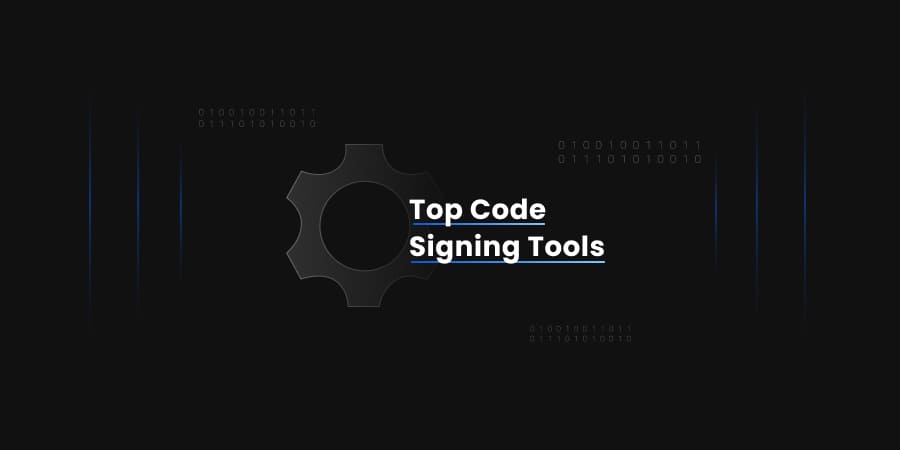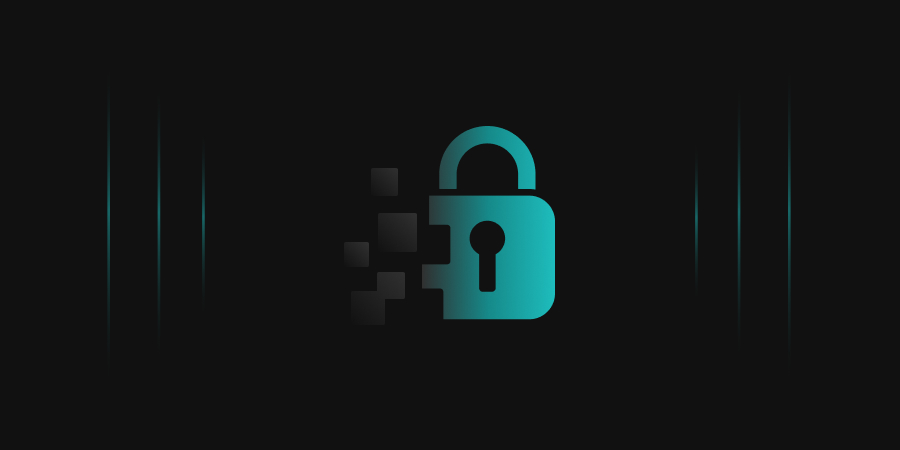Code-signing, a process in which developers digitally sign their software to confirm its authenticity and integrity, is a crucial defense against cyber threats like unauthorized code execution, spoofing attacks (where an attacker disguises themselves as a trusted entity to gain access or information), supply chain attacks (which targets less secure third-party vendors to compromise a larger organization’s systems), and many others. By attaching a cryptographic signature, code-signing ensures that software originates from a trusted source and hasn’t been altered.
This integrity is typically verified using hashing algorithms like SHA-256, which generate a unique, fixed-size “digest” of the software. Any change, no matter how small, to the software would result in a completely different hash, immediately revealing tampering. This process thereby fosters user confidence and provides protection against malware.
In 2025, code-signing is evolving quickly, driven by stricter regulations, advanced tools, and the necessity to counter such threats. One such crucial aspect includes timestamping, which provides a verifiable date and time for when the code was signed. This ensures the validity of the signature even if the code-signing certificate itself later expires or is revoked, offering long-term trust and preventing issues with outdated software.
Now, you might be wondering, “Is code-signing really required?”. Well, the answer is yes. Code-signing is vital as it protects users from malicious software and ensures compliance with industry standards. High-profile incidents, like the 2020 SolarWinds attack, where compromised software updates affected thousands of organizations, highlight the risks of unsigned or tampered code. Regulatory bodies, such as the CA/Browser Forum (an organisation primarily focused on setting standards for SSL/TLS and Extended Validation/Organization Validation certificates, but which also provides baseline requirements for publicly trusted code signing certificates), have responded with stricter rules, making code-signing a must-have for organizations aiming to build trust and meet compliance requirements.
Understanding Code Signing
Code-signing is a security process where developers use a digital certificate, issued by a trusted Certificate Authority (CA), to sign their software. This certificate contains a public-private key pair: the private key is used to create a unique digital signature, and the public key allows users to verify it. When a user downloads a signed software, their system checks the signature to confirm the software’s origin and ensure it hasn’t been altered.
This verification of the software ensures:
- Authenticity: proving the software comes from a legitimate source, not a malicious actor.
- Integrity: confirming the code hasn’t been tampered with since signing.
- Trust: reducing the risk of users encountering malware.
In industries like finance and healthcare, code signing is often required to meet regulatory standards, such as those set by the Payment Card Industry Data Security Standard (PCI DSS), the Health Insurance Portability and Accountability Act (HIPAA), the Federal Information Security Management Act (FISMA), and many more.
Code-signing certificates come in two types, each suited to different needs:
- Extended Validation (EV) Certificates: These require rigorous inspection of the organization, offering the highest level of trust. They are ideal for critical software like operating systems or enterprise applications, reducing user warnings and enhancing credibility.
- Organization Validation (OV) Certificates: These verify the organization’s identity and are commonly used for software distributed to a broad audience, such as productivity apps or browser extensions.
Code-signing applies to a wide range of software in 2025, including executable files (.exe, .app), scripts (PowerShell, Python, shell scripts), drivers, mobile apps (iOS, Android), browser extensions, firmware for Internet of Things (IoT) devices, container images (crucial for verifying the integrity of microservices and cloud-native applications), and serverless functions (to ensure that only trusted code runs in these ephemeral environments). The digital signature market is projected to grow from $9.94 billion in 2024 to $70.25 billion by 2030, at a CAGR of 38.5%, suggesting a broader trend of increasing reliance on cryptographic solutions.
Key Trends Shaping Code Signing in 2025
According to the Encryption Consulting Global Encryption Trends 2025 Report, 54% of organizations had implemented code-signing by 2024, and 87% of respondents are confident in further adoption this year. This increase is driven by growing cybersecurity concerns, tighter regulations, and user demand for reliable software.
-
Surge in Adoption
Regulatory bodies like the CA/Browser Forum are enforcing stricter standards, pushing organizations to adopt secure practices. For instance, the 2024 AnyDesk attack, where compromised code-signing certificates prompted urgent replacements, has raised awareness of software integrity risks. In enterprise software release policies, integrating code signing directly into Continuous Integration/Continuous Delivery (CI/CD) pipelines is increasingly mandated to ensure every build and artifact is verified for authenticity and integrity before deployment. Additionally, recent changes, such as the CA/Browser Forum’s reduction of code-signing certificate validity periods from 39 months to 460 days in 2025, aim to limit vulnerabilities from outdated certificates, driving adoption across industries like fintech, healthcare, and government.
-
Enhanced Security Measures
Since June 2023, private keys for code-signing certificates must be stored on hardware certified to FIPS 140-2 Level 2 or Common Criteria EAL 4+ standards. While Level 2 is the minimum, FIPS 140-2 Level 3 is becoming more common and recommended for enhanced security. This ensures keys are protected in Hardware Security Modules (HSMs) or certified USB tokens, reducing the risk of theft or misuse. In 2025, this practice is standard, with organizations investing in HSMs or cloud-based key management services like AWS KMS and Azure Key Vault HSM to increase the efficiency of and reduce the risk of cyberattacks.
-
Seamless Integration with DevOps
Integrating code-signing into DevOps pipelines is a major focus, addressing the 62% of organizations encountering integration issues. Code signing within CI/CD workflows ensures that all code is signed consistently, and with the help of tools like our CodeSign Secure, you can automate signing in platforms like Azure DevOps, Jenkins, or GitHub Actions, minimizing manual effort and saving time. This also extends to increasingly critical areas such as satisfying notarization requirements (e.g., for Apple’s macOS applications to ensure they run without security warnings), and signing within cloud-native environments for container images and Helm charts, crucial for validating the integrity of deployments in Kubernetes and other systems.
-
Stricter Standards and Policies
Organizations are adopting robust policies to align with industry standards. Role-Based Access Control (RBAC) limits access to signing keys, while timestamping prevents issues with certificate expiration. One of the few common policies and strategies is to use M-of-N approvals, i.e., requiring multiple signatories to release high-risk code, further enhancing security by distributing control and preventing a single point of failure. Automated key lifecycle management systems handle key generation, rotation, and revocation, addressing the key management challenges that around 47% of organisations face. Importantly, key ceremony logging and comprehensive audit trails are maintained for all key-related activities and signing events, providing irrefutable evidence for compliance audits and incident investigations. These policies ensure compliance and enhance security across the software development lifecycle.
-
Focus on Code Integrity in Open Source
With open-source software’s growing popularity, ensuring its integrity is critical. The 2025 State of Code Security Report by Wiz notes that 35% of GitHub repositories are public, and 61% contain cloud secrets, increasing exposure risks. You can mitigate these risks by verifying open-source components by integrating SBOM with code-signing, which will provide you with the vulnerability score of your software before signing and releasing it to the users.
Furthermore, organizations are increasingly leveraging specialized open-source security tools like Sigstore (for transparent, non-repudiable signing), OpenSSF Scorecards (for automated security posture assessment), Trivy, or Grype (for comprehensive vulnerability scanning of container images and filesystems) to assess and validate the security of their open-source dependencies continuously.
Future of Code Signing: Beyond 2025
As code signing evolves beyond 2025, several trends will shape its future, ensuring it remains a vital cybersecurity tool:
-
Quantum-Safe Cryptography Becomes Standard
With quantum computing advancing, traditional cryptographic methods may become vulnerable. NIST’s standardized quantum-resistant algorithms, such as ML-DSA (formerly Dilithium), ML-KEM (formerly Kyber), and LMS, are critical for code-signing.
Organizations are urged to adopt these to protect against “harvest now, decrypt later” attacks, where data collected today could be decrypted by future quantum computers. This threat is particularly acute for long-lived code, sensitive firmware, or data that needs to remain confidential for many years or even decades, as attackers can quietly collect encrypted information now, anticipating that a sufficiently powerful quantum computer in the future will allow them to decrypt it easily.
-
AI and Machine Learning Integration
AI is revolutionizing software development, and its integration into code signing is not far away. It will streamline threat detection by identifying anomalies in code before signing and enhance workflows by anticipating signing requirements. This includes leveraging AI for sophisticated malware analysis, identifying malicious patterns that traditional methods might miss, and developing “trust scoring” systems that evaluate the overall security posture and provenance of code before it ever receives a digital signature. With a projected 83% of developers utilizing AI tools in 2024, it is crucial to maintain the integrity and authenticity of code signing.
-
Blockchain for Immutable Records
Blockchain technology could provide immutable records of software integrity, enabling transparent verification across supply chains. This is achieved by chaining cryptographic hashes of code and metadata into an append-only ledger, often leveraging Merkle trees for efficient and tamper-evident hash validation of large datasets. The decentralized nature of blockchain also allows for more resilient and auditable revocation mechanisms, moving away from centralized points of failure. This is particularly relevant for open-source and AI-generated code, where trust is critical.
Pilot efforts like Sigstore’s transparency logs (Rekor), which publicly record signing events, and initiatives within frameworks like Hyperledger Indy (focused on decentralized identity and verifiable credentials) are paving the way for such solutions. By 2027, blockchain-based code-signing verification may become a standard for complex supply chains.
These trends suggest code-signing will remain dynamic, adapting to technological and regulatory shifts to secure software in an increasingly complex digital world.
Encryption Consulting’s CodeSign Secure
Encryption Consulting’s CodeSign Secure is a cutting-edge code signing solution addressing 2025’s code-signing needs. It provides advanced features aligning with industry trends and requirements, such as:
| Category | Capability | Benefit | Value/Impact |
|---|---|---|---|
| Key Protection | FIPS 140-2 L3 HSMs | Highest key security, tamper resistance | Mitigates supply chain attacks, protects against key theft |
| Policy & Access Control | RBAC & M of N Quorum Approvals | Prevent unauthorized signing, enforce accountability | Reduces insider threat, ensures policy adherence |
| DevOps Integration | CI/CD Automation | Streamlined, secure software releases | Accelerates secure development, reduces human error |
| Audit & Compliance | Real-time Auditing & Logging | Full visibility, detailed event tracking | Enables proactive incident response, simplifies compliance |
| Advanced Cryptography | PQC Readiness & Hybrid Signing | Future-proof security against quantum threats | Protects long-term software integrity and cybersecurity leadership |
| Platform Support | Multi-OS/Format Support | Comprehensive coverage across diverse software types | Simplifies enterprise-wide security, reduces tool sprawl, supports post-quantum test environments, and integrates with timestamping authorities. |
Conclusion
Looking ahead to 2025, code-signing is becoming a vital part of software security, influenced by trends such as shorter certificate validity, the rise of quantum-safe cryptography, and the integration of DevOps practices. It’s important to note that the adoption of hybrid cryptography, which combines classical and post-quantum algorithms, is a crucial transitional strategy, not a final destination, designed to provide security now while preparing for the quantum future.
Encryption Consulting’s CodeSign Secure v3.02 has been thoughtfully designed to tackle these challenges with its cutting-edge features, helping organizations prepare for both today’s and tomorrow’s threats. It also follows the industry-set best practices, such as regular key audits and automated certificate renewal processes, to maintain cryptographic hygiene and minimize vulnerabilities from expired or compromised keys.
As we move beyond 2025, exciting innovations like AI, blockchain, and quantum-safe algorithms will continue to enhance the effectiveness of code signing. It’s important for organizations to prepare and improve their development processes, empower their teams through training, and stay informed about evolving standards to keep their software secure and compliant.




